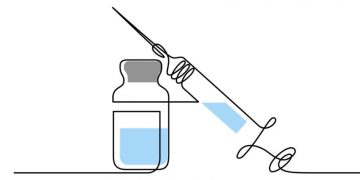Many people want to weld but don’t know where to start. If you have a workshop and basic tools, you can begin welding right away! If you’re going to do any projects that involve welding, you will need a good pair of heat-resistant welding gloves.
Welding gloves have a special lining that helps to insulate your hands from the heat of the welding torch. The welding gloves reviews also have a thick cuff that protects your forearm from sparks. When choosing a pair of welding gloves, be sure to pick ones that are comfortable and allow you to move your fingers freely. You’ll also want to make sure they’re the right size – too big and they’ll be cumbersome, too small and they won’t offer enough protection. With a good pair of heat-resistant welding gloves, you’ll be able to safely and confidently tackle any welding project.
Welding Safety
Before you start welding, it is important to understand the risks and take the necessary precautions. Welding produces harmful ultraviolet (UV) radiation, which can damage your eyes and skin. Always wear a welding helmet or hood fitted with a shade 10 or higher filter lens to protect your eyes. In addition, wear long sleeves and pants made from natural fibers as well as gloves and leather shoes to protect your skin.
A welder can be a great addition to any home workshop. With a welder, you can tackle a variety of DIY projects, from simple repairs to more complex projects. However, there are a few things to keep in mind when using a welder. First, always wear proper safety gear, including gloves, a mask, and protective clothing. Second, be sure to read the instructions carefully before beginning any project. And third, take your time and work slowly and carefully to avoid making mistakes. With these tips in mind, you can safely and successfully use a welder to complete a variety of projects around your home.
In order to weld, you need a power source, electrode holders, cables, and clamps.
Welding is a process where two pieces of metal join together using heat and pressure. You need a power source, electrode holders, cables, and clamps to weld. The power source provides the necessary heat and pressure to join the metals together.
The electrode holders are to keep the electrodes in place. The cables help carry electricity from the power source to the electrodes. The clamps hold the pieces of metal together while welding. There are many different types of welding, each with its own good and bad parts. For example, arc welding is good for welding thin metals, but not as good for thicker metals.
Oxyacetylene weldings is well suited for thicker metals, but it is not as effective for weldings difficult-to-reach areas. As a result, it is important to choose the right type of weldings for your project. Weldings is a process of joining two pieces of metal together. When you are weldings, you need to make sure you have all the right equipment before you start. This includes a power source, electrode holders, cables, and clamps. If you don’t have these things, your weld will not be good and it could be dangerous. Before starting a weldings project, make sure you have everything you need. This way, you can sit back and enjoy the satisfaction that comes with completing the project successfully.
Arc welders use direct current (DC) and can be plugged into a standard 120-volt outlet.
If you have 220-volt service available, you can purchase a machine that uses alternating current (AC). This machine will give you more power and flexibility for your projects. A wire feed welder is an AC/DC welder that uses a spool of wire as the electrode; it is less expensive than other types of welders and easy to set up.
Another type of welder is the oxyacetylene torch;
In addition to arc welders and MIG welders, another type of welder that can be used for DIY projects is the oxyacetylene torch. This type of welder uses a mixture of acetylene and oxygen to create a flame that is hot enough to melt metal.
Oxyacetylene torches are used for weldings metals that are difficult to weld with other methods. But they can also be used for soldering, brazing, and cutting metal. Oxyacetylene torches are not as common as arc welders or MIG welders, but they can be helpful for DIY projects that require more specialized weldings techniques.
Welding Techniques
There are three types of weldings processes: oxyacetylene torches rigging, MIG weldings, and TIG weldings. MIG stands for metal inert gas while TIG stands for tungsten inert gas. MIG weldings is the most common type of weldings for home workshops; it is fast and relatively easy to learn. TIG weldings produces cleaner welds than MIG welds but requires more practice to master.
TIG welds are made without adding any extra metal. The two pieces being joined are melted together. This usually happens with thin metals such as aluminum or stainless steel.
There are two types of joints: butt joints and lap joints. Butt joints are hard to weld but strong. Lap joints are easy to weld but not as strong. Practice weldings on extra metal before you do it on your project so you know what to do.
Conclusion:
Now that you know the basics of weldings safety, equipment, and techniques, you’re ready to start your first project! Weldings is a way to join two pieces of metal together. You can do it yourself if you know how. But first, you need to learn how to weld safely so that you don’t have an accident. Read the safety instructions that come with your welder before beginning any project. Additionally, always wear protective clothing, including gloves, a helmet, and long pants and sleeves.
Once you have the right safety gear this one, you can start weldings! But practice on some extra metal first, so you can get used to the welder and how it works. With a little practice, you’ll be able to weld like an expert in no time. Choose a simple project like a planter or small table to start with before moving on to more difficult projects.




























